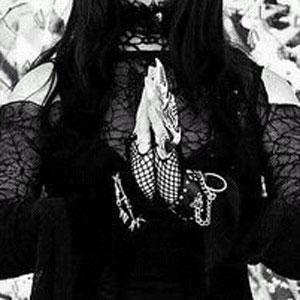Few things upset horror movie fans more than film industry attempts to appropriate their favoured genre. After all, what's the point of being a horror movie fan if your culture of choice is no longer stigmatised? But since the [i]The Blair Witch Project[/i] they've had to put up with a lot. Though a mediocre film, [i]Blair Witch[/i] cost almost nothing, and took a fortune at the boxoffice, aided by an ingenious Internet marketing campaign. It was the first horror movie since [i]The Exorcist [/i]and Halloween in the 1970s to make the leap so successfully from the genre ghetto into the mainstream market, and it reminded a new generation of hungry film executives that low budget genre movies can, occasionally, create high budget careers. They've been searching for its successor ever since.
The latest candidate is [i]Cabin Fever[/i], which has been heavily hyped, though with not quite the inventiveness that attended [i]The Blair Witch Project[/i]. Made as a low budget labour of love by Eli Roth (formerly an assistant to David Lynch) the film attracted a lot of attention at last year's Toronto International Film Festival, where various companies vied with each other to distribute it. Its subsequent publicity budget has far outstripped the movie's tiny production costs, and it arrived in Britain last month with a carefully constructed reputation as the next big thing.
This kind of prefabricated credibility does the film a disservice. [i]Cabin Fever[/i]'s virtues lie in Roth's unalloyed enthusiasm for its lowly genre origins, and he misses no opportunity to mimic, recreate, or pastiche 'classics' of modern horror. The film's opening sequences, for example, deploy a tracking, panning and generally mobile camera shooting from about two feet above the ground in exactly the fashion that made The Evil Dead so visually memorable. The film's narrative hook is the collegekidsatriskintheforest setup familiar from that and so many other post1970s horror movies, though in this case the monstrous threat is a flesheating virus. It borrows a song from [i]The Last House on the Left[/i], imagery that invokes, among many others, [i]Invasion of the Body Snatchers[/i], [i]Night of the Living Dead[/i] and [i]The Texas Chainsaw Massacre[/i], and generally stirs in the expected combination of gore, shock effects, and dark humour.
To this by now rather familiar stew (recent horror movies have been nothing if not selfreferential) Roth adds seasoning from less likely sources. There is a weird cop straight out of David Lynch, a briefly encountered giant rabbit of [i]Donnie Darko[/i] proportions, and a string of strange backwoods characters who are part Lynch, part traditional genre stereotypes, and part descendents of [i]Deliverance[/i]'s inbred Appalachian mountain folk. Indeed, the comparison with Deliverance is positively invited when the film introduces a silent young boy sitting outside the store when the doomed group first arrive. Though he may not look like the moonfaced, banjoplaying kid from Boorman's extraordinary film, he serves a similar purpose, articulating the strangeness and unpredictability of this world as perceived by its young city visitors. And he bites people.
In [i]Deliverance[/i], of course, that collision of cultures is the key to the film's unpacking of the apparently 'civilised' values of its group of holidaying men. [i]Cabin Fever [/i]has similar deconstructive ambitions, achieved by partially undercutting the hick stereotypes that it so vigorously invokes, and, more significantly, by making its group of college kids increasingly unappealing. Facing the invisible threat of the flesheating virus, their loyalty to each other and to civilised values collapses in a bloody mess of doomed selfinterest. Given budgetary and genre limitations, Roth is hardly able to treat that theme with Boorman's sophistication. But it is there in [i]Cabin Fever[/i] nonetheless, and, in combination with more depth of characterisation than such movies normally permit, it lifts the film some way out of the genre's current depressing rut.
Like the recent [i]Dog Soldiers[/i] (which also has a small group at bay in the wilderness, though this time they are British squaddies attacked by werewolves), Roth's film for all its humour and genre selfconsciousness does recover some of the paranoid sensibility which has been the defining feature of movie horror since the 1970s. The much noted 'postmodern turn' in 1990s horror, seen at its most skilful and selfaware in Wes Craven's [i]Scream[/i], has increasingly cultivated its audience's aspiration to knowing humour at the expense of any capacity to be genuinely disturbing. But what has driven post1970s horror at its best has been its presumption of a world gone wrong, a world in which people, authorities, social institutions, and the very fabric of daily life have become utterly unreliable, a world at risk and without hope. It is this bleak worldview that has made horror the defining movie genre of the late 20th century: the popular culture that risk society deserves.
To many of the rational, humane people who read this journal that may seem an extraordinary claim. How can such rubbish have such significance? Surely it is no more than a crude diversion for the gullible, indulging a perverse and dangerous taste for violence and gore? Perhaps so. But to examine the history of horror is to see our changing senses of fearfulness articulated through the metaphorical language of a popular form. [i]Cabin Fever[/i], and the defining films of the tradition on which it draws, may not be great art. But at their paranoid best they undoubtedly capture the darker features of the spirit of our times.

